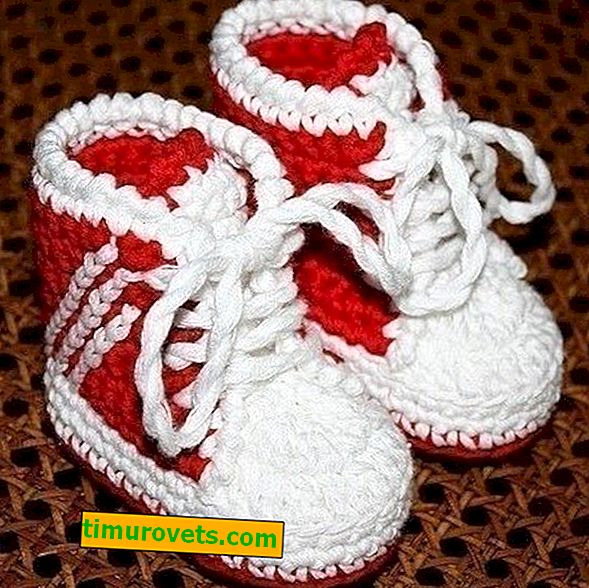In the Volga-Vyatka region is the autonomous republic of Mordovia. The indigenous peoples inhabiting it are Moksha and Erzya. Only one third of the Mordvinians live in autonomy. The rest are scattered throughout the Volga, Siberia, regions and republics of the Central District.
Erzya and Moksha belong to the peoples of the Finno-Ugric branch, have native languages and written language. Russian culture has influenced all spheres of peoples' life. In the 20th century, an original national costume underwent assimilation.
History reference

In the XVI century, Ivan the Terrible, heading for a military campaign in Kazan, subjugated the Mordvin. Noble birth swore allegiance to the Moscow sovereign. Tsar Ivan Vasilievich distributed the lands of Moksha and Erzyan to the boyars and monasteries.
There was a violent conversion of the local population to Orthodoxy. Many Mordovians at that time with families and belongings went on the run, rafting along the Volga to its lower reaches, to where the tsar’s power did not extend. The population remaining in their original territory, along with conversion to faith, was Russified. The runaways also assimilated, but the process was slower.
Important! In 1867, the Russian prose writer Melnikov-Pechersky, describing the life of Moksha and Erzya, noted that only in some villages a female Mordovian costume was preserved, and over time it was found less and less.
The characteristic features of the Mordovian national costume
One can speak of a national costume in the context of two cultures: Moksha and Erzya. Note the features inherent in the traditional alongside of both peoples:

- tailoring - straight and for a shirt (panhair), and for the top oar white clothes;
- decoration - woolen embroidery, which is characterized by red and black;
- jewelry - bibs and sashes, with metal and bead decor;
- shoes - wicker bast bast shoes with onuchi and leather boots with assemblies.
Features of men's, women's, children's costumes
Women of these nationalities wove canvases and cloth, from which later they sewed everyday and festive summer and winter clothes.

Women's costume is very beautiful, consists of many elements. The girl began to wear an outfit with a shirt, which had a tunic-like silhouette and cuts on the front panels. Panar was richly embroidered on the collar, sleeves, hem . Embroidery accompanied the front of the shirt (along the seam), back and chest (in the form of two longitudinal stripes). On holidays, the outfit was complemented by a second shirt - pokai, embroidered very tightly with embroidery and beads. The length of the products at the Mokshans allowed only to slightly close the knees, therefore, in the suit there were canvas pants to the ankles.
Aprons with or without a bib (and even with sleeves) are also an integral part of a woman’s costume. A tank top was put on over the panar, and the upper oversized canvas clothing was mushkas or rutsya. Like men, they wore a suman or sheepskin coat. All women's clothing, except the top, was intricately decorated with embroidery and embroidered with beads, coins, and chains.

The children's costume repeated all the elements of an adult, but the decorations in the outfit of the girl were much less, because the weight of the costume, so richly decorated, was also impressive.
What are the shoes decorated with?
Women were very fond of decorating themselves. All this was reflected in the suit:

- the headpiece was based on feather fringe and braid with embroidery;
- the girls hid their hair under silk and bead mantles;
- in the ears - earrings and birch bark mugs covered with material with sewn color patterns, beads;
- Breast jewelry was made of beads and necklaces. Particularly beautiful were beaded collars, chest nets, shoulder ornaments (two leather strips at the base, on which an ornament was sewn on with beads, buttons, and chains);
- wrist jewelry - a variety of bracelets and rings;
- the waist area was decorated with leggings with embroidery, buttons, a braid, beads, woolen fringe, copper chains, coins, shells;
- paired pendants hanging from the belt, consisting of a metal frame and copper wire in several rows. Tokens, shells, coins, bells, silk fringe were attached to them. Embroidered waist towels were plugged into the belt.
Note the main points regarding the national shoes of Moksha and Erzya:
- traditionally, Mordvins wore bast bast shoes of linden or an elm of oblique weaving;
- leather boots were a festive shoe option. They were distinguished by the assembly of the shaft, sharp noses, massive heels;
- winter shoes - felt boots;
- footcloths were wound on a bare foot: the lower ones on the feet, the upper ones on the calves;
- onuchi wound onuchi in cool weather - white or black, and on holidays - red with colored stripes of fabric.
Reference. In the traditions of the people, women are considered to be beautiful with straight, straight and full legs. Onuchi, in addition to the main function - warming, were just called to make an ideal out of the legs of any woman.
Modern Mordvin Costume

Students of the Saransk Art College, inspired by national motives of arts and crafts, advocate their inclusion in everyday or holiday dresses . In their term papers and dissertations, they use elements of cut and embroidery of ancient costumes, creating modern clothes in ethnic style. It turns out very successful and fresh images.










